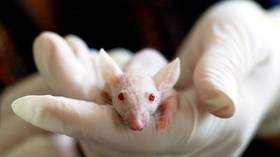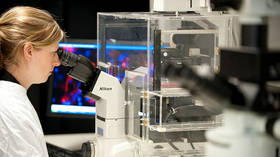Human limbs soon? Scientists regrow mice toes in major regenerative breakthrough

Researchers have concluded a “transformational” study in which, for the first time, they have successfully regenerated joint as well as bone tissue in amputated mice, a step which holds great promise for human limb regeneration.
Scientists at Texas A&M University were able to artificially stimulate growth in damaged or amputated limbs of neonatal mice, using just two proteins: BMP2 and BMP9.
Also on rt.com Irish man injected himself with his own SEMEN for 18 months in bizarre home back pain cure“These studies provide evidence that treatment of growth factors can be used to engineer a regeneration response from a non-regenerating amputation wound,”explain the researchers in their paper.
Their new research indicates joint regrowth, a level of complexity hitherto unforeseen, which provides a critical step towards one day replacing human limbs. The scientists were attempting to recreate behavior typically displayed by reptilian cells in mammalian cells.
“Our study is transformational,” Ken Muneoka from Texas A&M University, told New Scientist. “They can do it, they just don't do it,” he adds. “So, we have to figure out what's constraining them."
Bone regrowth has been achieved before, but without the additional protein, the bones would just heal over as normal rather than growing joint and cartilage tissue. Over 60 percent of the mice’s bone stumps formed a layer of cartilage within three days.
While admittedly just a small step, the research could ultimately provide breakthroughs in treatments for disorders like osteoarthritis as it would allow for replacement of cartilage from a person’s own cells rather than relying on transplants.
“These findings provide further support for the view that cells of a non-regenerative mammalian amputation wound retain the positional information necessary to re-build structures removed by amputation,” the researchers concluded.
The study is published in the journal Nature Communications.
Think your friends would be interested? Share this story!














